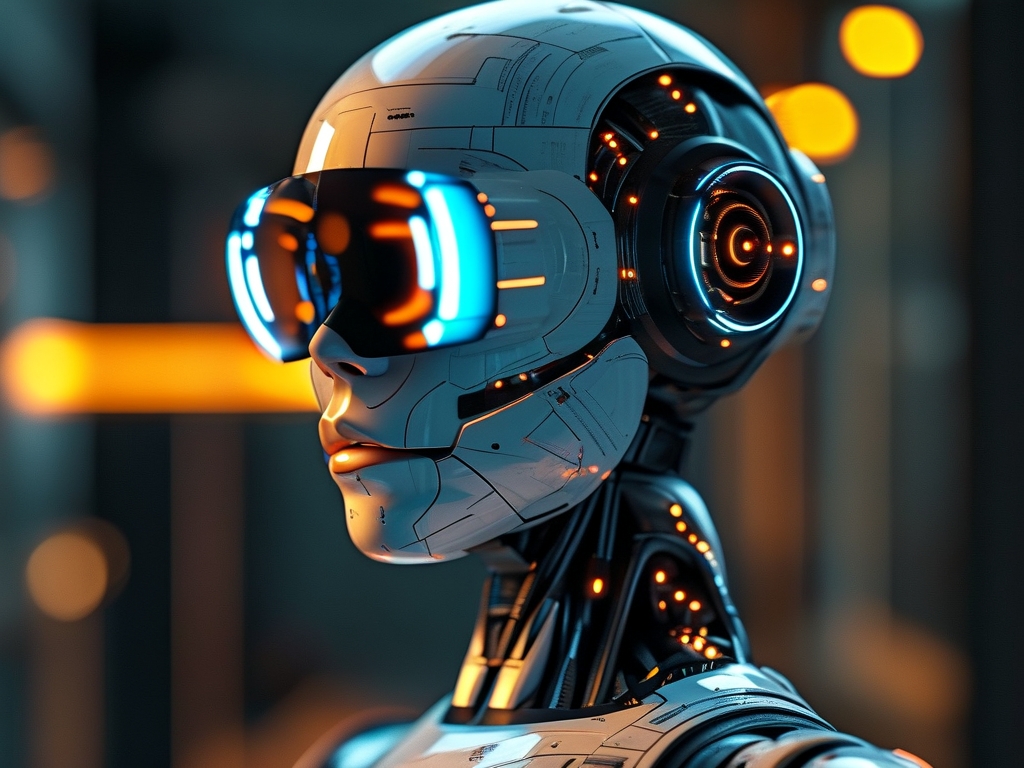The rapid evolution of robotics has brought humanoid machines closer to mimicking human capabilities, from locomotion to decision-making. Among the technologies driving this progress, optical waveguide technology stands out as a transformative force, enabling unprecedented precision, efficiency, and interactivity. This article explores how optical waveguides are reshaping the design and functionality of humanoid robots, unlocking new possibilities for human-machine collaboration.
The Role of Optical Waveguides in Humanoid Robotics
Optical waveguides are structures that guide light waves with minimal loss, typically using materials like glass or specialized polymers. In humanoid robots, this technology is revolutionizing data transmission, sensor integration, and energy management. Unlike traditional electrical wiring, optical waveguides transmit information via light, offering advantages such as:
- Ultra-high bandwidth: Enables real-time processing of vast sensory data (e.g., visual, tactile, auditory inputs).
- Immunity to electromagnetic interference: Critical for reliable operation in complex environments like factories or hospitals.
- Reduced weight and space: Replacing bulky cables with thin, flexible waveguides allows sleeker robot designs.
For humanoid robots, which require seamless coordination between hundreds of actuators and sensors, these benefits are game-changing.
Enhancing Sensory Perception and Responsiveness
Humanoid robots rely on advanced sensors to interact with their surroundings. Optical waveguides enhance these systems in two key ways:
-
Tactile Feedback Systems:
By embedding waveguide-based pressure sensors in robotic "skin," robots can detect touch with sub-millimeter precision. For instance, a healthcare assistant robot equipped with such sensors can safely lift a patient by dynamically adjusting its grip force. -
LiDAR and Vision Integration:
Waveguides enable compact LiDAR modules that map environments in 3D. Combined with machine learning, this allows robots like Boston Dynamics’ Atlas to navigate uneven terrain or manipulate delicate objects.
A 2023 study by MIT demonstrated a humanoid hand using waveguide-connected photonic sensors to identify 20+ texture types, achieving 98% accuracy—a milestone in robotic tactile intelligence.
Powering Brain-like Neural Networks
The computational demands of humanoid robots are immense. Optical waveguides address this by:
- Photonic Computing: Using light instead of electrons for data processing, waveguides enable faster neural network training. Toyota’s recent T-HR3 robot leverages this for real-time emotion recognition.
- Distributed Processing: Waveguides allow decentralized "nervous systems," where processing occurs locally at sensors, reducing latency.
This architecture mimics biological systems. For example, Tesla’s Optimus Gen-2 robot uses waveguide networks to process visual data 40% faster than its predecessor.
Energy Efficiency and Thermal Management
Humanoid robots often struggle with power consumption. Optical waveguides mitigate this by:
- Reducing energy loss during data transmission by up to 70% compared to copper wires.
- Enabling passive cooling through transparent materials, crucial for high-performance actuators.
Sony’s latest experimental robot, equipped with waveguide-powered joints, operates 50% longer on a single charge than conventional models.

Challenges and Innovations
Despite progress, hurdles remain:
- Manufacturing Complexity: Aligning microscopic waveguide structures requires nanoscale precision.
- Cost: High-purity materials like chalcogenide glass increase production expenses.
Researchers are tackling these issues through:
- 3D-Printed Waveguides: University of Stuttgart teams have printed waveguides directly onto robotic components.
- Hybrid Electronics-Photonic Chips: Companies like NVIDIA are developing integrated systems to lower costs.
The Road Ahead: Human-Machine Symbiosis
As optical waveguide technology matures, its integration with AI and quantum computing could yield robots that:
- Interpret human gestures and emotions instantaneously.
- Self-repair via waveguide-embedded diagnostic systems.
- Operate in extreme environments (e.g., space stations, deep-sea exploration).
Honda recently unveiled a concept robot using waveguide-driven "holographic interfaces," allowing users to control machines via projected gestures—a glimpse into a future where humans and robots collaborate as intuitive partners.
Optical waveguide technology is not merely an upgrade for humanoid robots; it represents a paradigm shift in how machines perceive, compute, and interact. By harnessing light’s unique properties, engineers are overcoming longstanding barriers in robotics, paving the way for machines that work alongside humans with unprecedented sensitivity and intelligence. As this fusion of photonics and robotics accelerates, the vision of truly symbiotic human-machine ecosystems is becoming tangible—one photon at a time.


